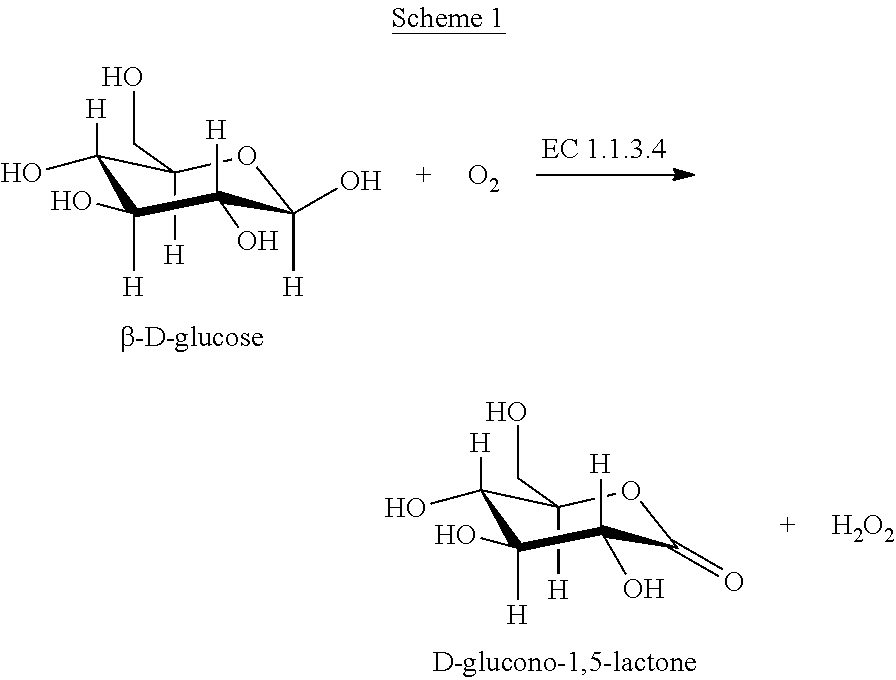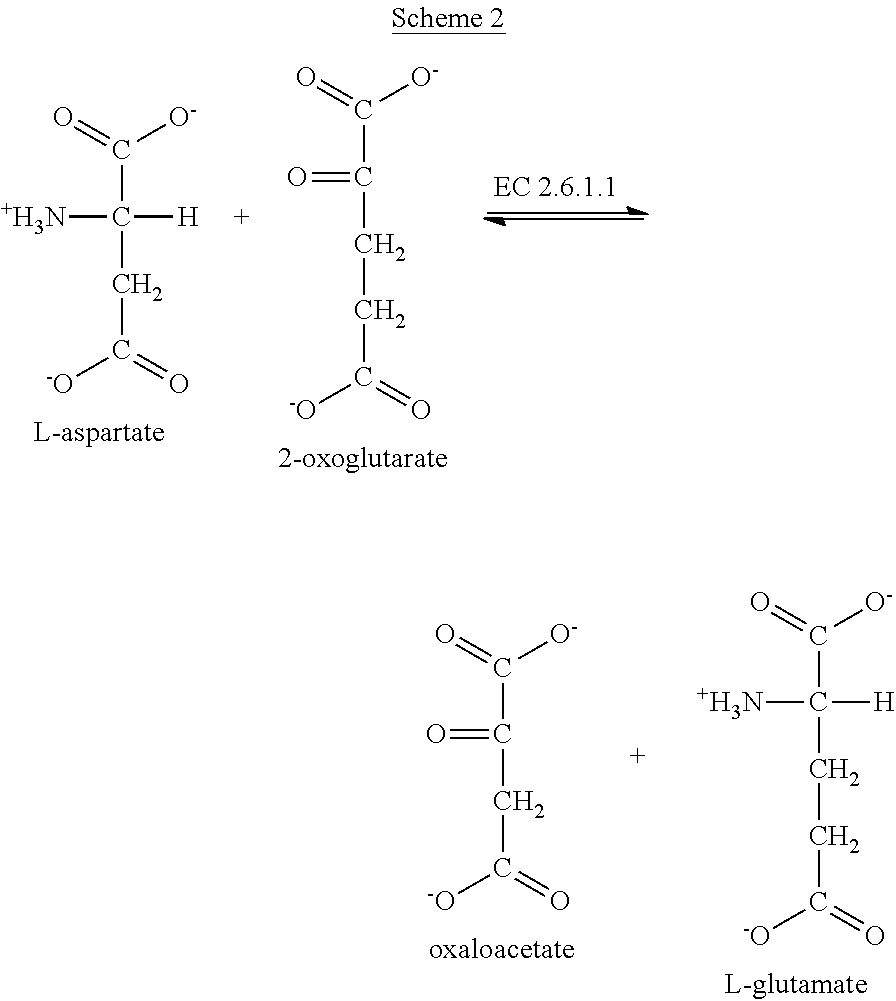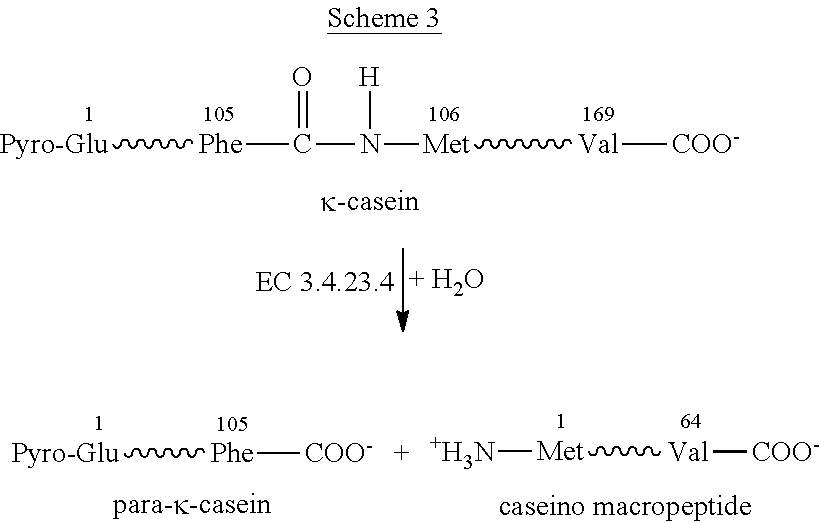Classification of Protein Sequences and Uses of Classified Proteins
a technology of protein sequences and proteins, applied in the field of classification of protein sequences and use of classified proteins, can solve the problems of unable to meet the needs of a wide range of homology proteins, unable to meet the requirements of a large number of available homology proteins, etc., and achieve the effect of overcoming the problem of over decades of defamation and deception
- Summary
- Abstract
- Description
- Claims
- Application Information
AI Technical Summary
Benefits of technology
Problems solved by technology
Method used
Image
Examples
example 1
Exemplary Enzyme Searchable Database
Methods
[0640]The motif extraction procedure described above was used for defining predicting sequences for almost all known enzymes and at all levels of the EC hierarchical classification. The procedure was separately applied to each one of the six EC main classes. The decrease functions DR and DL were defined as described hereinabove using the values ηR=ηL=0.8. The statistical significance threshold a was 0.01.
[0641]Protein sequences annotated with EC numbers were extracted from the UniProt / Swiss-Prot database (Release 48.3, Oct. 25, 2005). The following sequences were removed from the database: (i) sequences shorter than 100 amino acids or longer than 1200 amino acids; (ii) sequences with imprecise annotation (e.g., indicated as “probable” / “hypothetical” / “putative” or partially specified EC number); (iii) enzymes that catalyze more than one reaction (e.g., indicated as “bi-functional” or annotated with more than one EC number).
[0642]Table 2 summ...
example 2
Classification of Unclassified Enzymes Using Predicting Sequences
[0659]In this example, the ability of the predicting sequences of the present embodiments of the invention to classify unclassified enzymes is demonstrated. To mimic a situation in which an unclassified enzyme is to be classified using the enzyme database, a reduced enzyme database was constructed solely from the dataset of release 45 (see Table 3). All sequences of the dataset of release 48.3 that did not appear in the dataset of release 45 were considered, for the sake of demonstration, as “unclassified sequences”.
[0660]The reduced enzyme database was constructed from 41,265 sequences and the group of “unclassified sequences” included 10,730 sequences (26% of the number of sequences from which the reduced database was constructed). Each unclassified sequence was searched for a motif of amino acids matching a predicting sequence present in the reduced database, and the classifier corresponding to the matched predictin...
example 3
An Enzyme Searchable Database for Thermophilic Bacteria
[0663]In order to establish that the predictive methods described hereinabove are generally applicable, a dataset of predicting sequences for the genomes of 25 thermophilic bacteria with genomic sequence data available at the National Center for Biotechnology Information (NCBI) of the National Institutes of Health (NIH) was compiled. The 25 thermophilic bacteria are listed in table 12.
TABLE 12No.Thermophile1.Aeropyrum pernix2.Aquifex aeolicus3.Archaeoglobus fulgidus4.Deinococcus geothermalis DSM 113005.Methanobacterium thermoautotrophicum6.Methanosaeta thermophila PT7.Moorella thermoacetica ATCC 390738.Nanoarchaeum equitans9.Picrophilus torridus DSM 979010.Pyrobaculum aerophilum11. Pyrococcus abyssi12. Pyrococcus furiosus13. Pyrococcus horikoshii14. Sulfolobus acidocaldarius DSM 63915. Sulfolobus solfataricus16. Sulfolobus tokodaii17. Thermoanaerobacter tengcongensis18. Thermobifida fusca YX19. Thermococcus kodakaraensis KOD120....
PUM
| Property | Measurement | Unit |
|---|---|---|
| affinity | aaaaa | aaaaa |
Abstract
Description
Claims
Application Information
 Login to View More
Login to View More - R&D
- Intellectual Property
- Life Sciences
- Materials
- Tech Scout
- Unparalleled Data Quality
- Higher Quality Content
- 60% Fewer Hallucinations
Browse by: Latest US Patents, China's latest patents, Technical Efficacy Thesaurus, Application Domain, Technology Topic, Popular Technical Reports.
© 2025 PatSnap. All rights reserved.Legal|Privacy policy|Modern Slavery Act Transparency Statement|Sitemap|About US| Contact US: help@patsnap.com



